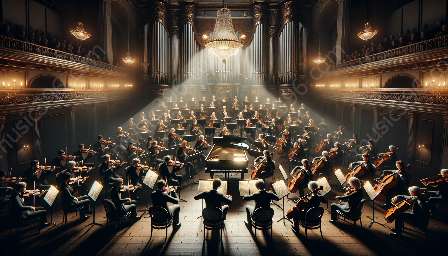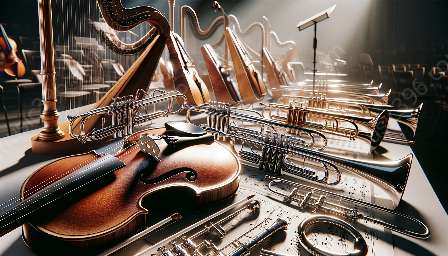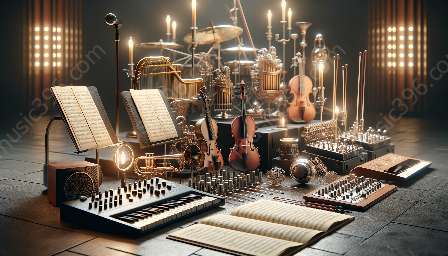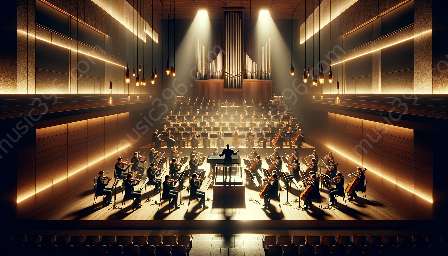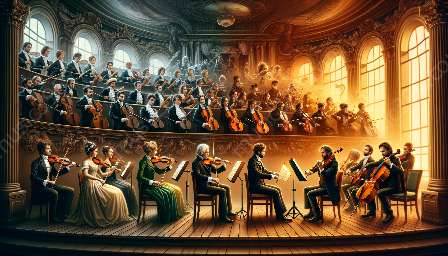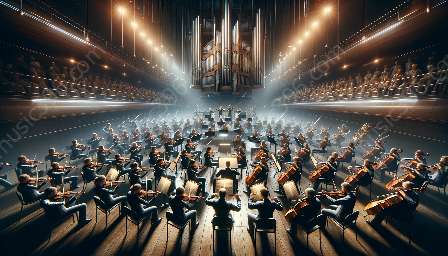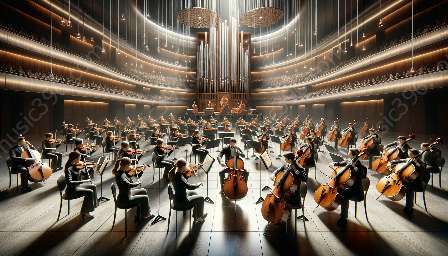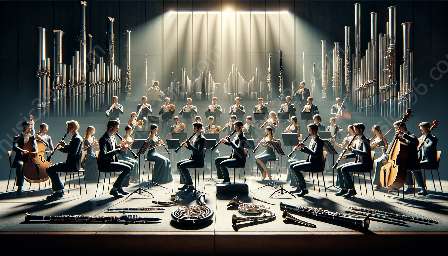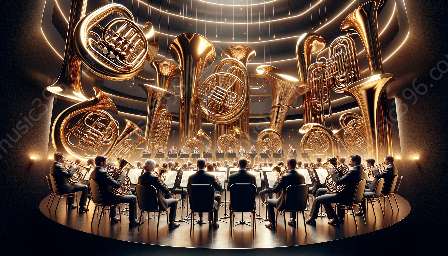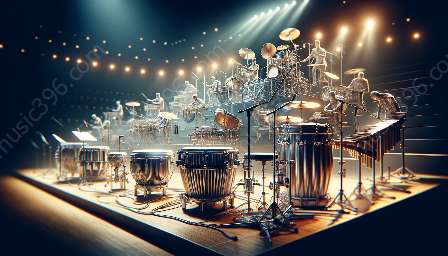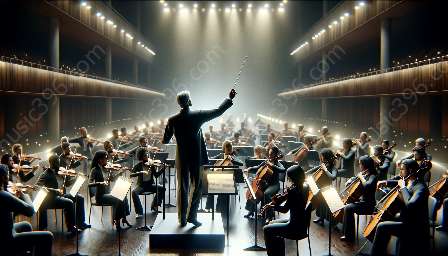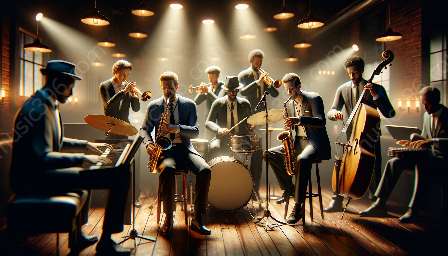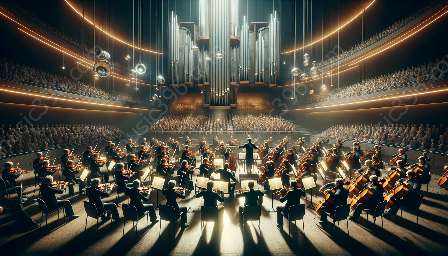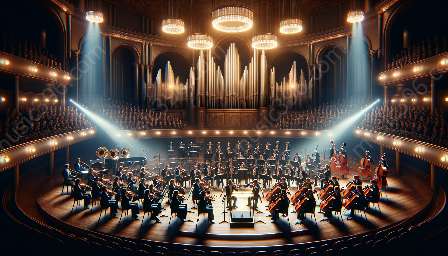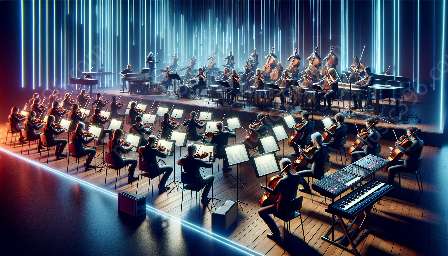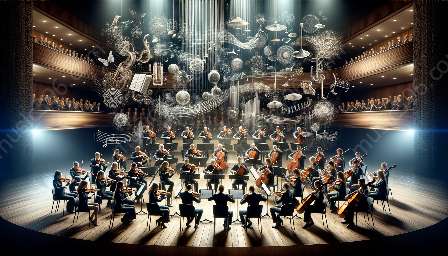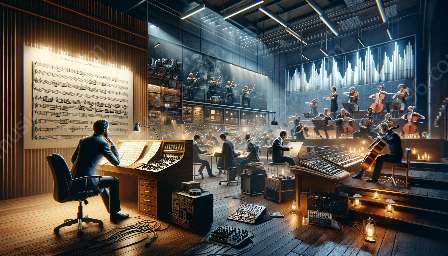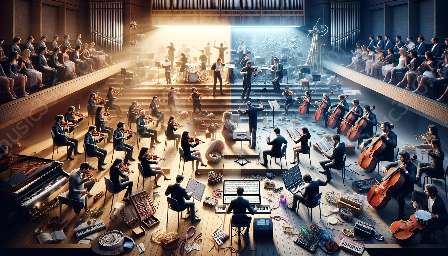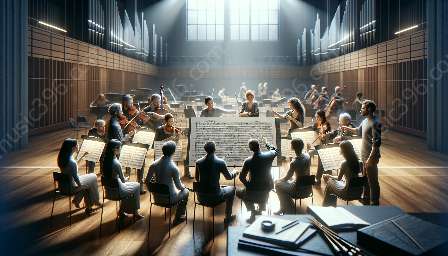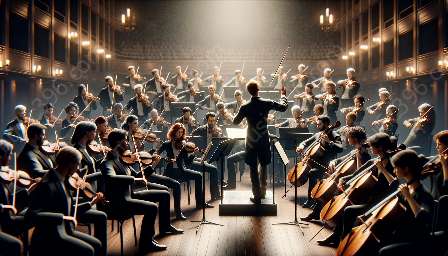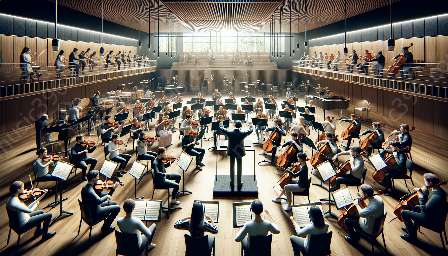Orchestration plays a pivotal role in bringing together the creative visions of composers and performers, forming a crucial link in the process of interpreting and performing musical compositions. By understanding the intricate relationship between interpretation, performance, and orchestration, we can explore how these elements interact to shape the final musical product.
Understanding Orchestration
Orchestration is the art of arranging music for an orchestra or other ensemble. It involves choosing which instruments will play which parts, determining the voicing and texture of the music, and crafting the overall sonic palette. Through orchestration, composers mold their musical ideas into tangible forms, allowing performers to breathe life into their compositions.
Interpretation and Performance in Orchestration
Interpretation is a key component of orchestration, as performers bring their own artistic sensibilities to the music. A composer's notation provides a framework, but the nuances of expression, phrasing, and dynamics often rely on the performers' interpretation. This collaborative process elevates the music beyond the written notes, making orchestration a dynamic exchange between composer and performer.
Furthermore, performers rely on the orchestration to guide their performance. The way a composition is orchestrated profoundly influences how performers approach their parts, affecting the balance and interaction between instruments, as well as the overall mood and character of the music.
Symbiotic Relationship
Effective collaborations between composers and performers hinge upon a symbiotic relationship, where orchestration serves as the bridge between conceptualization and realization. Composers must have an in-depth understanding of the capabilities and nuances of various instruments, enabling them to craft orchestral scores that resonate with performers.
Conversely, performers must grasp the composer's intentions embedded within the orchestration, breathing life into the music while staying true to the original vision. This mutual understanding and respect for each other's roles are essential for achieving a harmonious synthesis of composition and performance.
Harnessing Creativity
Orchestration also provides a platform for creative exploration and innovation. Composers can experiment with different instrumentations and textures, pushing the boundaries of musical expression. Performers, in turn, have the opportunity to showcase their virtuosity and interpretive skills, adding depth and richness to the musical tapestry.
The Art of Communication
Effective orchestration requires clear communication between composers and performers. Through detailed notation and score markings, composers convey their artistic intentions, providing performers with guidance while allowing room for personalized expression. Performers, in turn, communicate their insights and interpretations back to composers, fostering a continuous dialogue that enhances the collaborative process.
Conclusion
Orchestration serves as the linchpin that binds composers and performers, facilitating a symbiotic relationship that elevates musical creations into captivating performances. By understanding the interplay between orchestration, interpretation, and performance, we gain a deeper appreciation for the intricate dynamics at play in the world of music.

